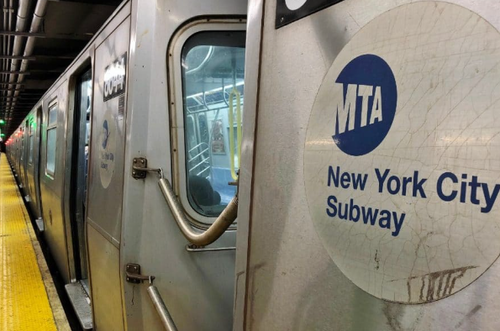While the MTA has yet another hand in your pocket with NYC's new congestion tolls, taxpayers are getting even less from the mass transit service in New York, which is on the "brink of collapse" a new report says.
The city’s subway system isn’t just teetering—it’s already breaking down, according to a new report from Gothamist.
Train delays caused by faulty infrastructure surged 46% last year compared to 2021, and major incidents delaying 50 or more trains hit their highest level since 2018, according to MTA data.
A Gothamist investigation revealed the crumbling state of the system through tours of restricted transit facilities and interviews with over 100 riders from nearly every subway line.
MTA records reveal service breakdowns could surpass those of the 2017 "summer of hell," when subway reliability hit record lows. Officials blame decades of deferred maintenance, keeping outdated equipment in use. Experts warn similar failures are imminent, risking widespread system disruptions.
The MTA has long been criticized for underfunding its infrastructure, a problem worsened by reduced maintenance during the 1970s financial crisis and massive debt from state funding cuts in the 1990s.
The Gothamist piece notes that now, the agency seeks $65 billion for system repairs and upgrades over five years but has less than half the needed funds. State lawmakers, debating how to cover the $33 billion shortfall, recently vetoed the plan as they negotiate potential new or dedicated taxes for the MTA.
The MTA's $65 billion plan excludes $15 billion from Manhattan's congestion pricing tolls, intended for transit upgrades first proposed in 2019.
MTA Chair Janno Lieber claims subway service is at its peak but admits many trains are barely held together. Even the ambitious plan falls short of addressing all urgent repairs. Experts blame the city’s exorbitant construction costs, among the highest globally, for delays and overspending.
The East Side Access project, completed in 2023, took 55 years and went $8 billion over budget. Despite reforms, critics argue the MTA’s inefficiencies and high costs remain a major challenge.
Century-old pumps, like those at the 116th Street station, struggle to manage flooding, leaving the system vulnerable during heavy rains. Even on dry days, outdated equipment, some predating the Great Depression, operates at minimal capacity, far below modern standards.
The MTA plans to allocate $700 million to upgrade pump rooms with advanced technology capable of handling significantly higher water flow, but repairs are long overdue, and the system remains fragile.
The subway’s repair tools and facilities are also failing. Diesel-powered work trains, many from the 1960s, frequently break down, stalling critical maintenance. At repair facilities, outdated equipment and poor conditions delay work, compounding the system's inefficiencies.
Weekend commuters bear the brunt of these issues as service disruptions grow. With major delays happening more frequently, the MTA’s proposed $65 billion modernization plan promises relief but will also intensify short-term outages while funding remains uncertain.
You can read the full length investigation here.
